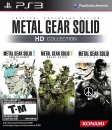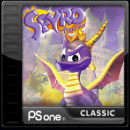Hello everyone,
This information is meant only for reference about PS4, Wii U and Xbox one GPU's complete technical details and i'll update this post as soon as I find out new details, so everybody can better understand and get some insight on the GPU's inside next gen consoles with respect to PC GPU's. These details are based on my research in the internet and links i've provided in the Sources, which we know about these so far. So, some of them may change in future and i'll update the post accordingly.
| Technical details |
Playstaion 4 GPU |
Xbox One GPU | Wii U GPU |
| Compute Units(CU) |
18 CU (4 VU + 1 SU) 72 Vector and 18 Scalar Units |
12 CU (4 VU + 1 SU) 48 Vector and 12 Scalar Units |
4 SC (Shader Cores) 64 Shader Units (4SC x 16) |
| Shader/Stream Processors(SP) |
1152 SP (18CU x 64 [4VU x 16ALU]) |
768 SP (12CU x 64 [4VU x 16ALU]) |
320 SP (4SC x 80[5ALU x 16SU]) |
| Texture Mapping units(TMU) | 72 TMU (18CU x 4VU) | 48 TMU (12CU x 4VU) | 16 TMU (4SC x 4) |
| Raster back-ends(RB) | 8 RB (Color/depth blocks) | 4 RB (Color/depth blocks) | 2 RB (Color/depth blocks) |
| Raster operators(ROP) | 32 ROP (8RB x 4/clock) | 16 ROP (4RB x 4/clock) | 8 ROP (2RB x 4/clock) |
|
Pixel Fill rate (GPU Clock x ROP) |
25600 MPixels/sec (800Mhz x 32ROP) |
13648 MPixels/sec (853Mhz x 16ROP) |
4400 MPixels/sec (550Mhz x 8 ROP) |
|
Texture Fill rate (GPU Clock x TMU) |
57600 MTexels/sec (800Mhz x 72TMU) |
40944 MTexels/sec (853Mhz x 48TMU) |
8800 MTexels/sec (550Mhz x 16 TMU) |
|
FLOPS (SP x G Clk x 2ops/cycle) |
1843.2 GFLOPS |
1310.2 GFLOPS |
352 GFLOPS |
| GPU Clock | 800 Mhz | 853 Mhz | 550 Mhz |
| Memory Clock | 5500 Mhz GDDR5 | 2133 Mhz DDR3 | 1600 Mhz DDR3 |
|
Memory bandwidth (M Clk x Bus wide/8)/1000 |
176 GB/sec Unified RAM (5500Mhz x 256bit/8)/1000 |
68 GB/sec RAM + ESRAM of 109 GB/sec @853 Mhz(Uni) 204 GB/sec Peak(Bi) |
12.8 GB/sec RAM + Up to 1000 GB/sec EDRAM |
| Fabrication and architecture | 28 nm, GCN and GCN 2.0 | 28 nm, GCN | 40/45 nm, RV810[TS 2] |
| RAM | 8GB GDDR5 | 8GB DDR3 + 32MB ESRAM | 2GB DDR3 + 32MB EDRAM |
| Close Desktop GPU match | Radeon HD 7870 (disabled 2CU) |
Radeon HD 7790(disabled 2CU) | ATI HD 5550 |
PS4 GPU:
It is derived based on the AMD's GCN architecture Southern Islands GPU with enhancements of liver pool architecture(GCN 2.0).
PS4: GPU Specifications:
Compute Units : 18 CU
Shader Processors : 1152 SP(18CU x 64 [4VU x 16ALU])
Texture Units : 72 TMU(18CU x 4VU)
Raster Back-end : 8 RB (Color/depth blocks)
Raster Operators : 32 ROP (8RB x 4/clock)
Memory Bus Type : 256 bit (8GB GDDR5)
Pixel Fill Rate : 25600 MPixels/sec (800Mhz x 32 ROP)
Texture Fill Rate : 57600 MTexels/sec (800Mhz x 72 TMU)
FLOPS : 1843.2 GFLOPS (1152 x 800Mhz x 2 ops/cycle[MUL+ADD])
Memory Bandwidth : 176 GB/sec (5500Mhz x 256bit/8)/1000
SOURCES:
http://www.gamasutra.com/view/feature/191007/inside_the_playstation_4_with_mark_.php?page=2
http://www.vgleaks.com/orbis-gpu-compute-queues-and-pipelines/
http://www.eurogamer.net/articles/digitalfoundry-face-to-face-with-mark-cerny
How Sony Modified the Hardware:
The three "major modifications" Sony did to the architecture to support this vision are as follows, in Cerny's words:
1) First, added another bus to the GPU that allows it to read directly from system memory or write directly to system memory, bypassing its own L1 and L2 caches. We can pass almost 20 gigabytes a second down that bus. That's not very small in today’s terms -- it’s larger than the PCIe on most PCs!.
PCIe x16 v2.x bandwidth - 8 GB/s
PCIe x16 v3.0 bandwidth - 15.75 GB/s
One barrier in a traditional PC hardware environment is communication between the CPU, GPU, and RAM. The PS4 architecture is designed to address that problem.
2) "Next, to support the case where you want to use the GPU L2 cache simultaneously for both graphics processing and asynchronous compute, we have added a bit in the tags of the cache lines, we call it the 'volatile' bit. This innovation radically reduces the overhead of running compute and graphics together on the GPU."
3) Thirdly, "The original AMD GCN architecture allowed for one source of graphics commands, and two sources of compute commands. For PS4, we’ve worked with AMD to increase the limit to 64 sources of compute commands -- the idea is if you have some asynchronous compute you want to perform, you put commands in one of these 64 queues, and then there are multiple levels of arbitration in the hardware to determine what runs, how it runs, and when it runs, alongside the graphics that's in the system."
Cerney said, "Our overall approach was to put in a very large number of controls about how to mix compute and graphics, and let the development community figure out which ones they want to use when they get around to the point where they're doing a lot of asynchronous compute."
He expects developers to run middleware -- such as physics, for example -- on the GPU. Using the system he describes above, you can run at peak efficiency, he said.
The PS4's Dedicated Units:
Another thing the PlayStation 4 team did to increase the flexibility of the console is to put many of its basic functions on dedicated units on the board -- that way, you don't have to allocate resources to handling these things.
1)Hardware dedicated unit for audio:
This unit supports audio chat without the games needing to dedicate any significant resources to them. The audio unit also handles decompression of "a very large number" of MP3 streams for in-game audio.
2)Hardware dedicated unit for video:
This unit does compression and decompression of video.
3)Hardware dedicated unit for zlib compression/decompression:
To further help the Blu-ray along, this unit supports zlib decompression -- so developers can confidently compress all of their game data and know the system will decode it on the fly. "As a minimum, our vision is that our games are zlib compressed on media
4)Secondary chip for background downloads/uploads/vita remote play:
This unit supports downloads and updates in the background, vita remote play and to help blue ray drive in reading by caching the mostly needed game date to HDD.
COMPARISON WITH PC GPU:
PS4 GPU is a match for Destkop GPU AMD 7870 with two Compute Units(CU) disbled for yields and clocked down by 200Mhz, but PS4 GPU has more memory bandwith and other customizations to Compute Units.
Comparison between PS4, AMD 7870 and AMD 7850 GPU's
|
Technical details |
Playstaion 4 GPU |
AMD 7870 GPU |
|
Compute Units(CU) |
18 CU (4 VU + 1 SU) 72 Vector and 18 Scalar Units |
20 CU (4 VU + 1 SU) 80 Vector and 20 Scalar Units |
|
Shader/Stream Processors(SP) |
1152 SP (18CU x 64 [4VU x 16ALU]) |
1280 SP (20CU x 64 [4VU x 16ALU]) |
|
Texture Mapping units(TMU) |
72 TMU (18CU x 4VU) |
80 TMU (20CU x 4VU) |
|
Raster back-ends(RB) |
8 RB (Color/depth blocks) |
8 RB (Color/depth blocks) |
|
Raster operators(ROP) |
32 ROP (8RB x 4/clock) |
32 ROP (8RB x 4/clock) |
|
Pixel Fill rate (GPU Clock x ROP) |
25600 MPixels/sec |
32000 MPixels/sec |
|
Texture Fill rate (GPU Clock x TMU) |
57600 MTexels/sec |
80000 MTexels/sec |
|
FLOPS (SP x G Clk x 2ops/cycle) |
1843.2 GFLOPS |
2560 GFLOPS |
|
GPU Clock |
800 Mhz |
1000 Mhz |
|
Memory Clock |
5500 Mhz GDDR5 |
4800 Mhz GDDR5 |
|
Memory bandwidth (M Clk x Bus wide/8)/1000 |
176 GB/sec |
153.6 GB/sec |
|
Fabrication |
28 nm |
28 nm |
|
RAM |
8GB GDDR5 |
2GB GDDR5 |
|
Architecture |
GCN and GCN 2.0 |
GCN |
XBOX one GPU:
It is also derived based on the AMD's GCN architecture as PS4 and it matches Desktop AMD 7790 GPU.
XBOX ONE GPU Specifications:
Compute Units : 12 CU
Shader Processors : 768 SP(12CU x 64 [4VU x 16ALU])
Texture Units : 48 TMU(12CU x 4VU)
Raster Back-end : 4 RB (Color/depth blocks)
Raster Operators : 16 ROP (4RB x 4/clock)
Memory Bus Type : 256 bit (32MB ESRAM + 8GB DDR3)
Pixel Fill Rate : 13648 MPixels/sec (853Mhz x 16 ROP)
Texture Fill Rate : 40944 MTexels/sec (853Mhz x 48 TMU)
FLOPS : 1310.2 GFLOPS (768 x 853Mhz x 2 Os/cyl[MUL+ADD])
Memory Bandwidth : 68 GB/sec ( DDR3 RAM) and ESRAM buffer= 109 GB/sec for uni-direction, 204 GB/sec Peak for Bi-direcrtion
Addtional Hardware and Optimizations in XBon one:
Digital Foundry: You talk about having 15 processors. Can you break that down?
Nick Baker: On the SoC, there are many parallel engines - some of those are more like CPU cores or DSP cores. How we count to 15: [we have] eight inside the audio block, four move engines, one video encode, one video decode and one video compositor/resizer.
The audio block was completely unique. That was designed by us in-house. It's based on four tensilica DSP cores and several programmable processing engines. We break it up as one core running control, two cores running a lot of vector code for speech and one for general purpose DSP. We couple with that sample rate conversion, filtering, mixing, equalisation, dynamic range compensation then also the XMA audio block. The goal was to run 512 simultaneous voices for game audio as well as being able to do speech pre-processing for Kinect.
COMPARISON WITH PC GPU:
Xbox one GPU overall matches to the Desktop GPU Model AMD 7790 with 2 Compute Units(CU) disabled for yields, slower memory(DDR3) and clocked down by 147Mhz, but Xbox one GPU has 32MB faster memory bandwidth with 256bit controller and some console related customizations.
| Technical details | Xbox One GPU | AMD 7790 GPU |
| Compute Units(CU) |
12 CU (4 VU + 1 SU) 48 Vector and 12 Scalar Units |
14 CU (4 VU + 1 SU) 56 Vector and 14 Scalar Units |
| Shader/Stream Processors(SP) |
768 SP (12CU x 64 [4VU x 16ALU]) |
896 SP (14CU x 64 [4VU x 16ALU]) |
| Texture Mapping Units(TMU) | 48 TMU (12CU x 4VU) | 56 TMU (10CU x 4VU) |
| Raster back-ends(RB) | 4 RB (Color/depth blocks) | 4 RB (Color/depth blocks) |
| Raster operators(ROP) | 16 ROP (4RB x 4/clock) | 16 ROP (4RB x 4/clock) |
|
Pixel Fill Rate (GPU clock x ROP) |
13648 MPixels/sec |
16000 MPixels/sec |
|
Texture Fill Rate (GPU clock x TMU) |
40944 MTexels/sec |
56000 MTexels/sec |
|
FLOPS (SP x GPU Clock x 2ops/cycle) |
1310.2 GFLOPS |
1792 GFLOPS |
| GPU Clock | 853 Mhz | 1000 Mhz |
| Memory Clock | 2133 Mhz DDR3 | 6000 Mhz GDDR5 |
| Memory bandwidth |
68 GB/sec RAM + ESRAM of 109 GB/sec @853 Mhz(Uni) 204 GB/sec Peak(Bi) |
96 GB/sec RAM |
| Fabrication | 28 nm | 28 nm |
| RAM | 8GB DDR3(256bit) + 32MB ESRAM | 1GB GDDR5(128bit) |
| Architecture | GCN | GCN |
Sources:
http://techreport.com/news/24844/microsoft-reveals-next-generation-xbox-one-console
http://www.vgleaks.com/durango-gpu-2/
http://www.eurogamer.net/articles/digitalfoundry-xbox-one-memory-better-in-production-hardware
http://www.extremetech.com/gaming/156467-xbox-one-hardware-and-software-specs-detailed-and-analyzed
http://kotaku.com/the-xbox-ones-insides-have-changed-a-little-bit-since-992960685
http://www.itworld.com/hardware/370538/xbox-one-will-have-high-performance-custom-chip?page=0,0
http://gamrconnect.vgchartz.com/thread.php?id=167055&page=1
http://www.cpu-world.com/news_2013/2013032301_AMD_Introduces_Radeon_HD_7790_GPU.html
http://www.hwcompare.com/14298/radeon-hd-7790-vs-radeon-hd-7870/
http://www.eurogamer.net/articles/digitalfoundry-the-complete-xbox-one-interview
Wii U GPU:
Wii U GPU is based on AMD's Terascale 2 archictecture and its a cut down version with a GPU name of Redwood(RV810) which is used for HD5xxx series, unlike PS4 and Xbox one's GCN architecture which is used for HD7xxx series. Wii U GPU is highly customized with high speed L1/L2 caches and EDRAM buffer on the hardware level. So, to get the most performance out of this hardware the developers needs to master using these high speed caches and buffer.
Wii U GPU Specifications:
Shader Cores/SIMD Engines : 4 SC (each has 16 Shader Units [SU] and 4 Texture Units[TMU])
Shader Processors : 320 SP(4SC x 80 [16SU x 5ALU])
Texture Units : 16 TMU(4SU x 4)
Raster Back-end : 2 RB (Color/depth blocks)
Raster Operators : 8 ROP (2RB x 4/clock)
Memory Bus Type : 128 bit (32MB EDRAM + 2GB DDR3[64bit])
Pixel Fill Rate : 4400 MPixels/sec (550Mhz x 8 ROP)
Texture Fill Rate : 8800 MTexels/sec (550Mhz x 16 TMU)
FLOPS : 352 GFLOPS (320 x 550Mhz x 2 ops/cyl[MUL+ADD])
Memory Bandwidth : EDRAM Up to 1000GB/sec and 12.8 GB/sec for DDR3 RAM (1600Mhz x 64bit/8)/1000
Wii GPU is an exact match with ATI Radeon HD 5550 Desktop GPU.
| Technical details | Wii U GPU | ATI Radeon HD 5550 GPU |
| Compute Units(CU) |
4 SC (Shader Cores) 64 Shader Units (4SC x 16) |
4 SC (Shader Cores) 64 Shader Units (4SC x 16) |
| Shader/Stream Processors(SP) |
320 SP (4SC x 80[5ALU x 16SU]) |
320 SP (4SC x 80[5ALU x 16SU]) |
| Texture Mapping units(TMU) | 16 TMU (4SC x 4) | 16 TMU (4SC x 4) |
| Raster back-ends(RB) | 2 RB (Color/depth blocks) | 2 RB (Color/depth blocks) |
| Raster operators(ROP) | 8 ROP (2RB x 4/clock) | 8 ROP (2RB x 4/clock) |
|
Pixel Fill rate (GPU Clock x ROP) |
4400 MPixels/sec (550Mhz x 8 ROP) |
4400 MPixels/sec (550Mhz x 8 ROP) |
|
Texture Fill rate (GPU Clock x TMU) |
8800 MTexels/sec (550Mhz x 16 TMU) |
8800 MTexels/sec (550Mhz x 16 TMU) |
|
FLOPS (SP x G Clk x 2ops/cycle) |
352 GFLOPS | 352 GFLOPS |
| GPU Clock | 550 Mhz | 550 Mhz |
| Memory Clock | 1600 Mhz DDR3 | 1800 Mhz GDDR3 |
|
Memory bandwidth (M Clk x Bus wide/8)/1000 |
12.8 GB/sec for RAM and Up to 1000 GB/sec EDRAM |
28.8 GB/sec RAM |
| Fabrication | 40 nm | 40 nm |
| RAM | 2GB DDR3 + 32MB EDRAM | 1GB GDDR3 |
| Architecture | RV810 [Terascale 2] | RV810 [Terascale 2] |
http://www.anandtech.com/show/6465/nintendo-wii-u-teardown
http://ixbtlabs.com/articles3/video/cypress-p2.html
http://www.guru3d.com/articles_pages/radeon_hd_5670_review_(crossfire_tested),2.html
http://www.bit-tech.net/hardware/graphics/2009/09/30/ati-radeon-hd-5870-architecture-analysis/
http://perspectives.mvdirona.com/2009/03/18/HeterogeneousComputingUsingGPGPUsAMDATIRV770.aspx
http://en.wikipedia.org/wiki/Radeon_HD_5000_Series#Radeon_HD_5500
http://www.eurogamer.net/articles/df-hardware-wii-u-graphics-power-finally-revealed
http://beyond3d.com/showthread.php?t=60501&page=211
Details about GPU concepts and how its useful:
Compute Unit of GCN:
Each compute unit has 1 scalar unit, Texture unit and four vector units. Each vector unit is 16 lanes wide. Each lane of the vector unit is a scalar ALU, and that is described as a "processing element" in OpenCL terminology. Stream core (or) Shader Processor is a scalar ALU within a vector unit: that is there are 64 of them in each compute unit.
SIMD Engine (or) Shader Cores of : (Used before GCN architecture, found in Wii U)
Cypress(RV870) architecture is split down into twenty SIMD cores, each with 16 shader units(SU) and four Texture units(TMU), each SU has four ALUs which can do ADD+MUL and one special ALU doing more than others. Totally, there are 64ALU + 16 SFU ALU = 80 stream processors per SIMD.
Redwood(RV810) architecture used in Wii U GPU has 4 SIMD cores, which is a cut down version of Terascale architecture 2(improved version of Cypress architecture). Totally, there are 40 ALU's(stream processors) and 16 Texture units tied to 4 SIMID cores each with 4.
Texture Units:
Texture units (aka TMUs or texture mapping units) map textures onto 3D geometry. 3D scenes are generally composed of two things: 3D geometry, and the textures that cover that geometry. Texture units in a video card take a texture and 'map' it to a piece of geometry. That is, they wrap the texture around the geometry and produce textured pixels which can then be written to the screen.Textures can be an actual image, a light map, or even bump mapping.
Texture Fill Rate:
The number of textured pixels the card can render to the screen every second. To render a 3D scene, textures are mapped over the top of polygon meshes. This is called texture mapping and is accomplished by texture mapping units (TMUs) on the videocard. Texture fill rate is a measure of the speed with which a particular card can perform texture mapping.
Raster Operator:
The last stage of the graphics pipeline which writes the textured/shaded pixels to the frame buffer.Raster Operators (ROPs) handle several chores near the end of the of the pixel pipeline. ROPs handle anti-aliasing, Z and color compression, and the actual writing of the pixel to the output buffer.
Pixel Fill Rate:
The number of pixels the card can render to the screen every second. Before pixel shader processing became the more limiting factor, this was the most accurate measure of performance (along with texel fill rate).
Memory bandwidth:
The speed at which the card can access memory.Memory bandwidth is equal to the size of the memory bus multiplied by the speed at which the memory is clocked.The higher the memory bandwidth, the better the card will be able to handle large textures and anti-aliasing and anisotropic filtering.
GAMING is not about spending hours to pass/waste our time just for fun,
its a Feeling/Experience about a VIRTUAL WORLD we can never be in real, and realizing some of our dreams (also creating new ones).
So, Feel Emotions, Experience Adventure/Action, Challenge Game, Solve puzzles and Have fun.
PlayStation is about all-round "New experiences" using new IP's to provide great diversity for everyone.
Xbox is always about Online and Shooting.
Nintendo is always about Fun games and milking IP's.

























































